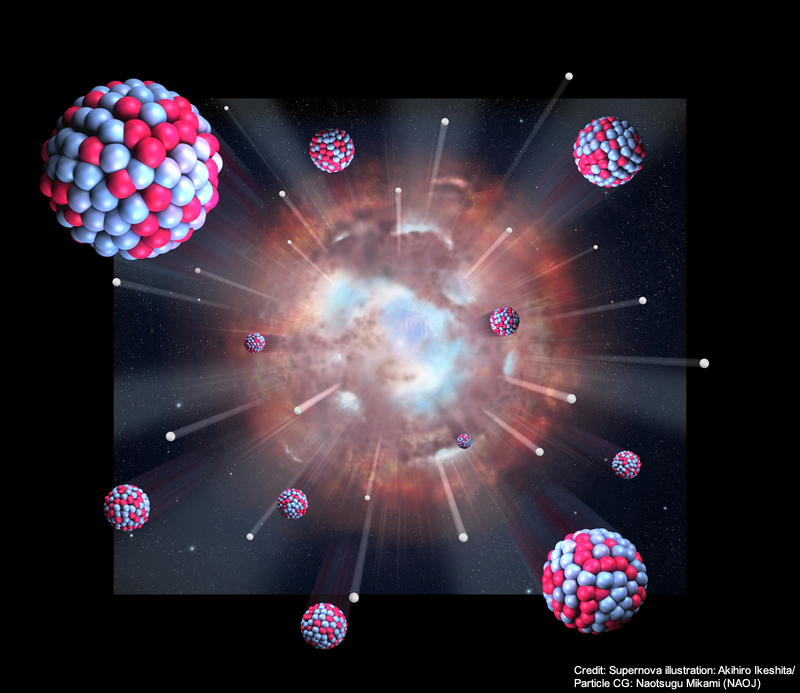Great Progress towards the Origin of R-process
| Science
International collaboration team directed by Dr. G. Lorusso and Dr. S. Nishimura (P.I., NAOJ visiting professor of 2013) at the RIKEN-Nishina Center for Accelerator-Based Science (chief scientist, Dr. H. Sakurai) produced 110 extremely neutron-rich, heavy radioactive isotopes by using the world highest-performance accelerator at RIKEN-RIBF and succeeded for the first time in measuring their beta-decay half-lives. Although these isotopes called r-process elements are presumed to originate in stellar explosions such as supernovae or binary neutron-star mergers, their astrophysical site has not yet been identified uniquely. Mr. S. Shibagaki (PhD graduate student) and Prof. T. Kajino in the Division of Theoretical Astronomy at NAOJ and the University of Tokyo applied these high precision data to the theoretical calculation of the r-process nucleosynthesis and obtained the results consistent with those expected from the core-collapse supernovae. It was also found that their supernova r-process calculation explains "universality" of the elemental-abundance pattern (as a function of atomic number) between the solar-system and the metal-poor halo stars which had been discovered by spectroscopic observations using the Subaru Telescope and Hubble Space Telescope, etc. These results are published in Phys. Rev. Lett. of American Institute of Physics.

For more detail, please see For the violent r-process, the devil’s in the details (RIKEN).